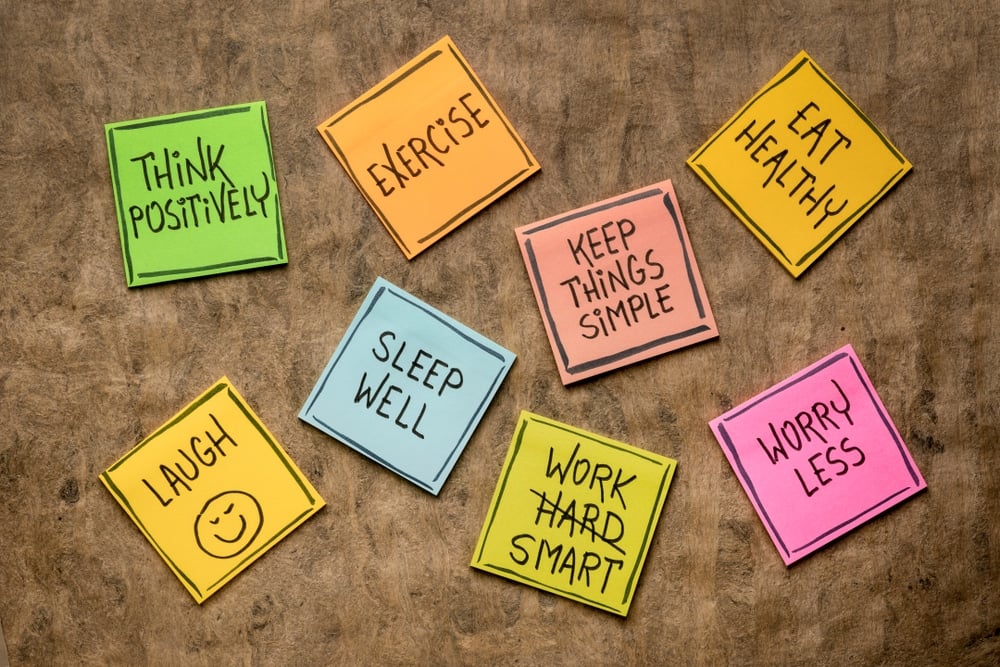In 1954, Dr. Brock Chisholm, the first Director-General of the World Health Organization (WHO), stated that “without mental health there can be no true physical health“
Around 264 million people globally, suffer from depression and from anxiety, and 450 million people experience mental or neurological disorders. A study in Korea found that 75 percent of those who attempted suicide, were living with more than one mental illness, and in Australia, the suicide rate amongst people with a mental illness is more than seven times higher than in the rest of the population.
Problems relating to mental health in the workplace are the second-biggest health issue in Asia Pacific in terms of years lost to disability. In Australia and New Zealand, the annual estimated total cost of mental illness is 3.5 percent and 5 percent of GDP respectively. An EIU study also estimated that within the next ten years, the fall out from mental health issues will reduce economic growth in India and China by around 11 trillion USD.
Why is wellbeing in the workplace so important?
We often spend more of our waking hours at work than we do at home. Just because work is a different environment doesn’t mean we become different people, and some of the biggest stresses in our day to day life can originate at work. Colleagues might be challenging, deadlines tight, the commute long, or maybe the job is unrewarding but financially imperative.
A successful organisation depends on employee wellbeing. A paper entitled ‘Does Worker Wellbeing Affect Workplace Performance?’ investigated the relationship between employees’ subjective well-being and workplace performance in Britain. They found a clear correlation between the average level of job satisfaction at the workplace and workplace performance. However, they found zero association between levels of job-related affect and workplace performance.
Roffey Park Institute provides business education worldwide, and helps organisations, teams and individuals create a collaborative, resilient, high performing and inclusive culture. As well as delivering high impact learning in leadership, management, OD and HR, as part of its charitable purpose it conducts international research. More recently, in collaboration with Profile Asia and The Next Step, almost 2,500 respondents, working in organisations with employees in Asia Pacific ranging in size from under 200 to over 5,000 employees, were surveyed from October 2019 to January 2020 as part of the Working in Asia Pacific research study. The study has similar findings, reporting that Australia had the lowest reports of stress in the region and the highest increase in productivity, whereas Singapore had a lowered productivity level despite an increase in work hours and the highest stress levels.
Organisations and leaders need to take a proactive approach towards wellbeing and mental health in the workplace to ensure stakeholders are happy, motivated and productive. However it’s not about merely being more resilient and expecting employees to know how to be more resilient as individuals. It takes a concerted effort and a joined up strategy, which plays out at all levels of the organisation.
Establishing a mental health, wellbeing and resilience strategy at work:
- Improves employee focus and performance
- Increases productivity
- Reduces stress and absenteeism
- Increases job satisfaction
- Promotes physical health and general wellbeing
- Creates better relationships with colleagues and managers
- Attracts and retains top talent
Not only are happy employees more productive, but you’ll also have a lower staff turnover and make your organisation more attractive to the next generation, who often value happiness and job satisfaction more than salary and perceived prestige.
Mental health and wellbeing in Asia Pacific
Traditionally in most countries in the Asia Pacific region, there has been a stigma associated with mental disorders. Whilst part of this can be linked to cultural and belief systems, it is also due to a lack of awareness and literacy around mental health issues. These issues are compounded by limited availability and access to mental health services and support, with the Asia Pacific region spending on average, less than the five percent of total health spending that the WHO recommends. Additionally, there is a lack of opportunity for people with mental health disorders to find work, which affects financial independence and societal acceptance.
Thankfully, the tide is turning. Although in 2020, the Asia Pacific region ranked below 35% in having an environment that engenders an open and supportive culture, more employers are recognising the critical importance of accommodating employees with mental health issues. The Working in Asia Pacific research data reported an increased awareness of mental health support in organisations across Asia Pacific, with the Public Sector ranking highest in knowing about employee assistance programmes and offering mental health and resilience training.
And whilst the Covid-19 reaction may not have been welcome, there has been a silver lining. The report found that 57.2% of respondents felt it was now more acceptable to discuss mental health issues with their manager, with board director level respondents feeling this the strongest at 76.3%.
How to improve wellbeing in the workplace

A mental health, wellbeing and resilience strategy will only work when it becomes part of the culture of an organisation. The precedent has to be set from the top down. A manager who embodies good self care practices, demonstrates the ethos of an organisation, better than any memo or initiative around mental health. Simple actions, such as sticking to healthy working hours, and taking lunch away from one’s desk are the foundations to create a positive environment
Organisational initiatives to improve mental health in the workplace
Raise the profile of mental health
Having open and honest discussions about mental health removes the stigma of what is usually a hidden issue. Managing mental health in the workplace is something managers and leaders should be trained for, so they can signs in employees who may be struggling, and create effective strategies for helping them.
Communicate employee benefits
There’s no point in having support services available to your employees if they aren’t aware of them. These may be access to counselling, free gym membership, or mentoring schemes. Use all avenues of communication to ensure stakeholders know what’s on offer and how to access them.
Offer flexible working practices
Covid-19 has demonstrated that many organisations can adapt and thrive with a home-based workforce. With increasingly complicated lives in the modern world, it’s important to offer flexible working options in order for your staff to remain motivated and engaged.
Utilise intrinsic motivation
Performing a task for the enjoyment of it is intrinsic motivation. A strategy that employs intrinsic motivation helps employees tap into their personal interests and goals help to create a happy, productive, and engaged workforce.
Create an environment that promotes wellbeing
The University of Exeter in the UK conducted research to show that bringing plants into the office, increased employee wellbeing by up to 47%. Ensure the workplace is clean, comfortable, and has everything your employees need to do their job in a stress free environment. Consider turning unused spaces into chill out or break out rooms. Offer free yoga, meditation and wellbeing classes over lunchtimes.
Encourage staff to be more active
Most office workers sit for over eight hours a day, which is extremely dangerous for long-term health. Educate your employees about the dangers of a sedentary lifestyle and encourage them to take regular breaks.
Promote a healthy lifestyle
Provide free fruit and other healthy eating options, free or discounted gym membership, cycle schemes, free health checks, and access to education on healthy living. Offer classes and workshops on resilience and stress management, mindfulness, meditation and yoga.
Employee strategies to improve mental health and wellbeing
Make lifestyle changes
- Practise being straightforward and assertive in communicating with others
- Use relaxation and mindfulness techniques
- Discover a purpose
- Develop your interests and hobbies
- Make time for your friends
- Find balance in your life
Look after your physical health
- Get enough sleep
- Eat and drink healthily
- Exercise daily
- Take regular breaks
Give yourself a break
- Reward yourself for achievements
- Believe in your abilities
- Get a change of scenery
- Take a break or holiday
- Resolve conflicts
- Forgive yourself for mistakes
Build your support network
- Focus on friends and family
- Get support at work
- Talk to your doctor
How to build resilience
Emotional resilience is not just the ability to ‘bounce back’ from a stressful event, but the ability to adapt in the face of changing and challenging circumstances. We aren’t born with intrinsic resilience, everyone can achieve it.
- Develop and practice your problem solving skills
- Establish achievable goals
- Take one step at a time
Embrace change
- Learn to be flexible and adaptable
- See change as an opportunity to thrive
- Take action
- Stay optimistic
The benefits of a mental health and wellbeing strategy in the workplace
Establishing a wellbeing strategy, and building a culture that encourages open and positive communication around mental health should be given the same priority as building your brand and gaining more business. While the cost of mental ill-health is not merely a financial issue, calculating the costs of mental health problems can be persuasive when making the case for investment in preventing them.
By focussing on how to build resilience at work at the individual level, you’re also creating a resilient organisation. Happy employees are engaged, motivated, and productive, able to adapt to changing and challenging circumstances and take the company with them.
Every organisation is different, however there are many steps, most of them free, that can improve mental health and wellbeing in the workplace. The key is to be adaptable, flexible, and experiment with different ideas until you find a tailored strategy that can evolve as your staff and organisation change too.





